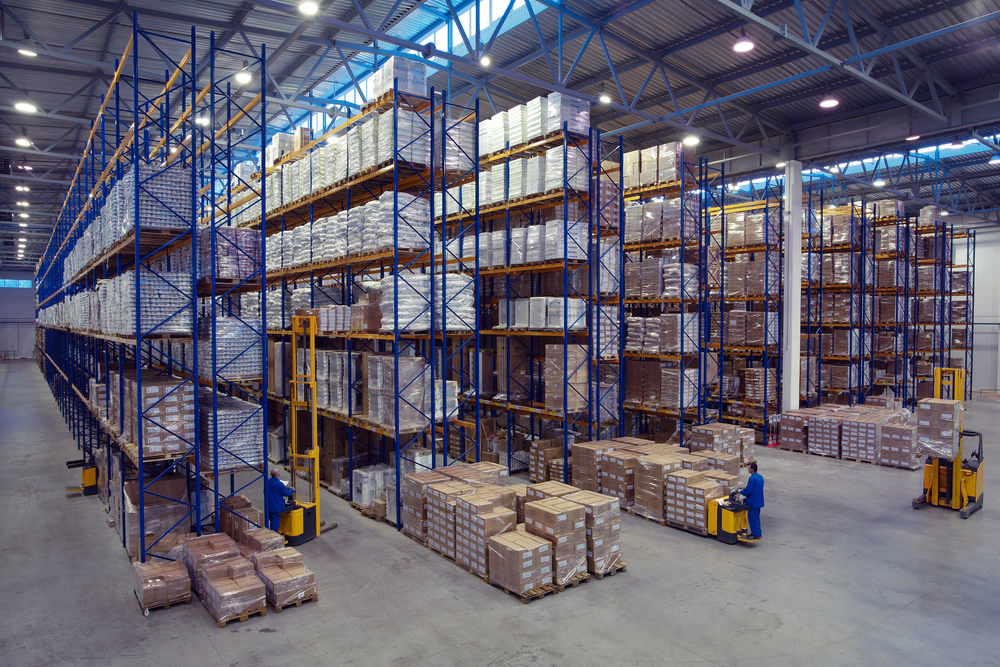Palletizing correctly is key to delivering goods ranging from fresh products to motor parts without damages. Palletizing is also the most economical and safe way to handle large shipments with forklifts. However, when the appropriate measures aren’t followed box compression strength loss, unstable pallets and possible injuries or damages are at a higher risk. Therefore, we created a helpful guide for the Do’s and Don’ts of Palletizing.
Do’s of Palletizing
- Spacing: Make sure to accommodate the package correctly so every pallet takes up all the space available. Leaving available space wastes money and time because more trucks will be needed later on.
- Positioning: Place big and sturdy packs and items evenly, first on the bottom to create a stable base. Equal-weight distribution at the bottom of the pallet helps maintain its balance and correctly arranges the goods. This technique lets the top layer stay steady, but also allows you to place items on the pallet’s edge if there aren’t enough boxes to fully stack it.
- Strapping: Use ratchet straps to secure large and oddly shaped items properly. The best materials to use are metal strapping or plastic wrap for pieces over 150 pounds.
- Labeling: Its very important to know the size of every pallet so drivers can know how much to load in a truck. Labeling the pallets with item details and the address is of great help to them. The labels also help staff know the proper pallet patterns.
- Stacking: Retrieve products properly from a pallet by using the First-In-Last-Out process. As a safety precaution, its best to stack boxes in columns and as close together as possible for better stability.
- Sheeting: A trick used to protect the bottom of a pallet is to cover it completely with a plastic sheet. Wooden pallets lack support for the boxes’ bottom due to the 4 inch space between decks. Therefore, by covering the bottom with a slip sheet you can avoid compression strength deprivation and add support.
Don’ts of Palletizing
- Capacity: Try not to go beyond the maximum size capacity when placing items on a pallet. This helps avoid damaging the goods and doesn’t let items overhang from the edges of the pallets.
- Overhang: The reason overhang leads to damages is because it causes two edges of a box to support the entire load rather than have equal support. Overhanging decreases a pallet’s strength and can reduce top to bottom compression up to 30%.
- Liquids: Make sure to always check for unwanted liquids or leakage before and after palletizing. All liquids should be drained out completely from containers or any engine parts before placing them onto a pallet.
- Hazards: All goods must be free from hazardous, harmful or illegal material. By checking for such things you will avoid unwanted incidents during freight transportation and upon destination arrival.
- Damages: Don’t use a storage system if even the slightest damage was identified within it since it can damage the entire freight load.
- Interlocking: Don’t interlock boxes because it can reduce strength by 50% and lead to freight damage. You must stack boxes, not only in columns, but also edge-to-edge and corner-to-corner since 2/3 of potential compression strength is in vertical edges and corners.
- Pyramids: Last but not least, don’t stack boxes in pyramid formation because its a less secure way of palletizing. The bottom may seem steady but the top boxes will have a high risk of damage.
At BoxOn we always look for ways to improve the logistics industry, even down to the pallets. BoxOn is a technology designed as a solution to improve your business. Contact Us for more information and schedule a FREE BOXON DEMO.






COMMENTS